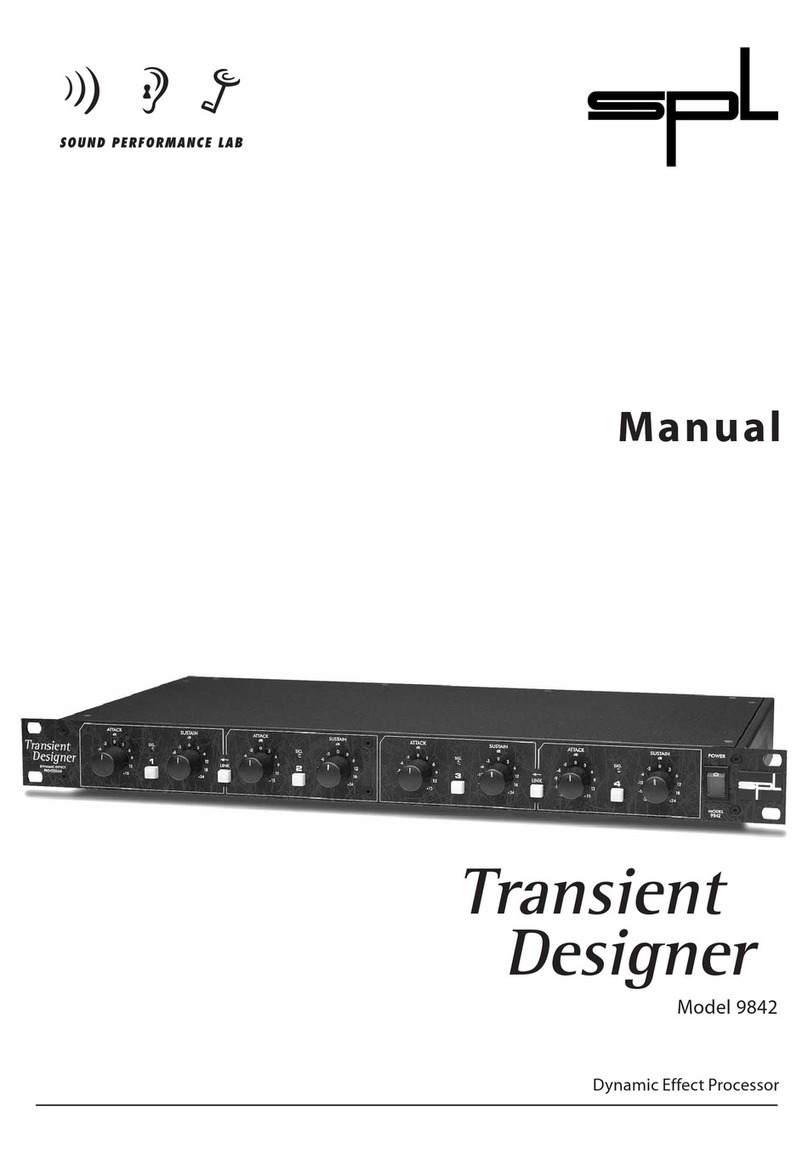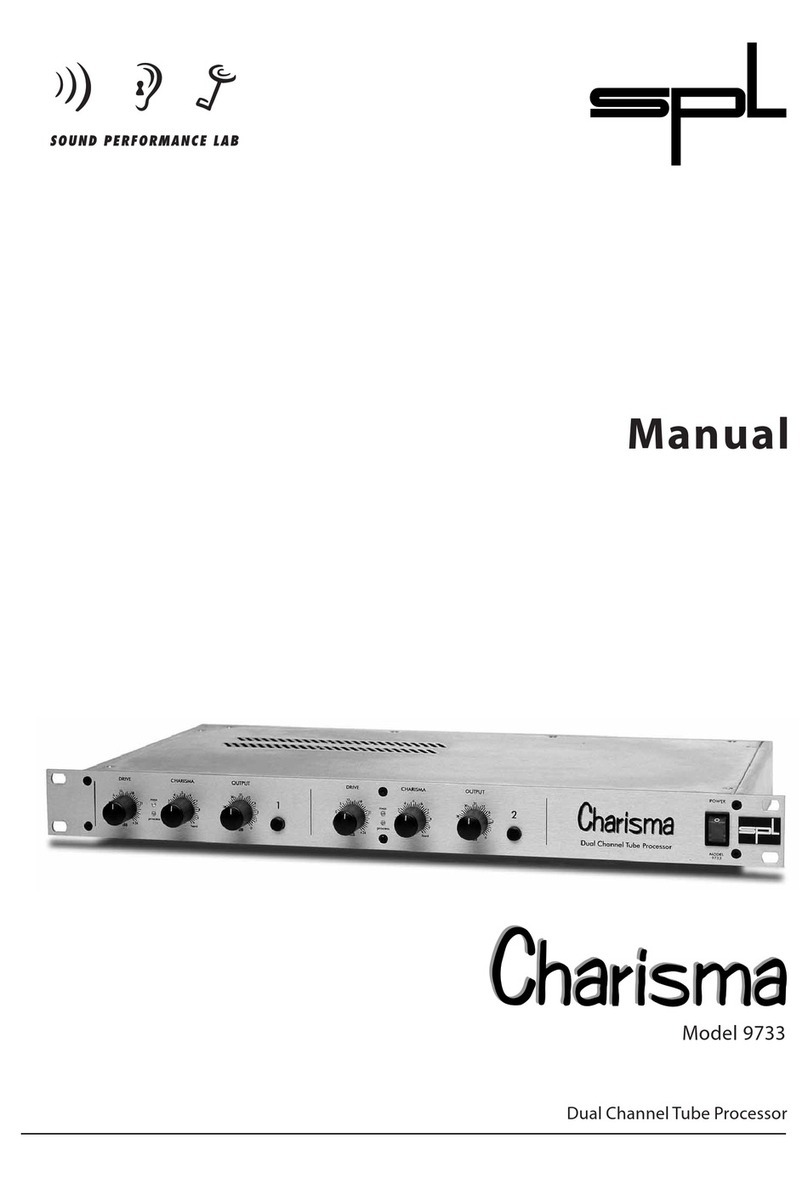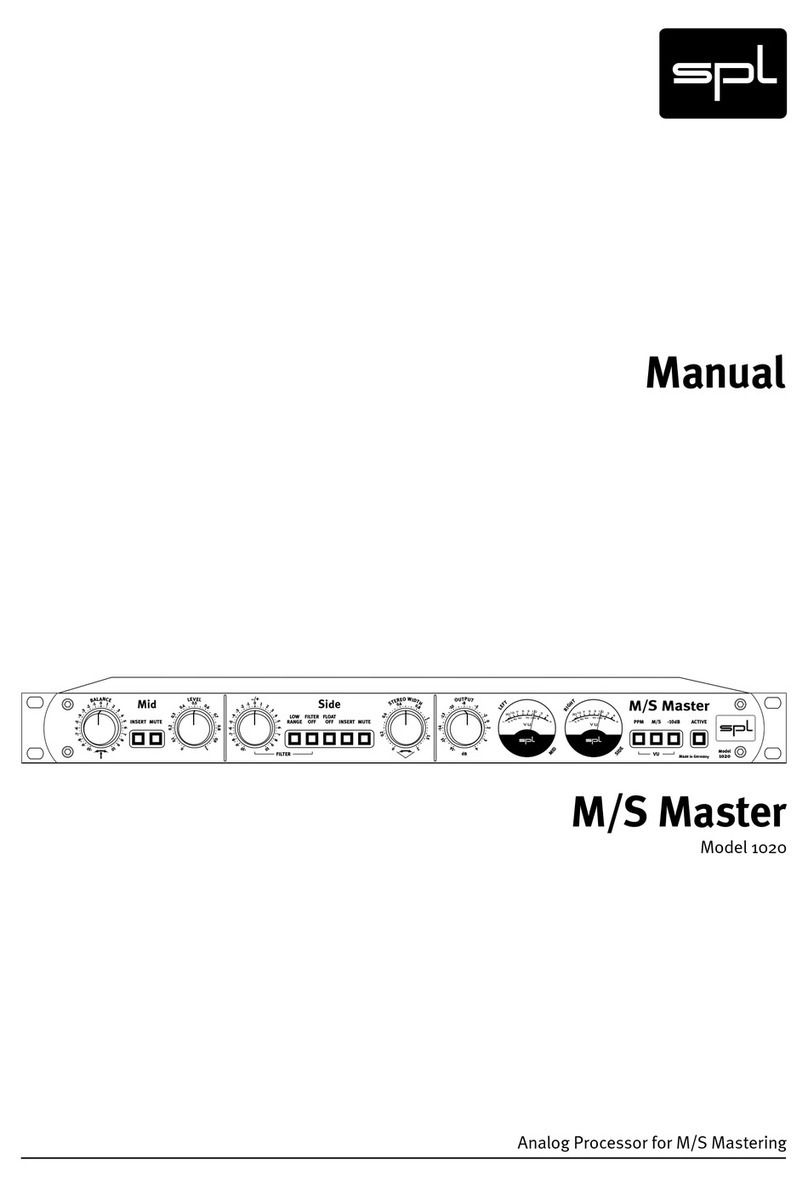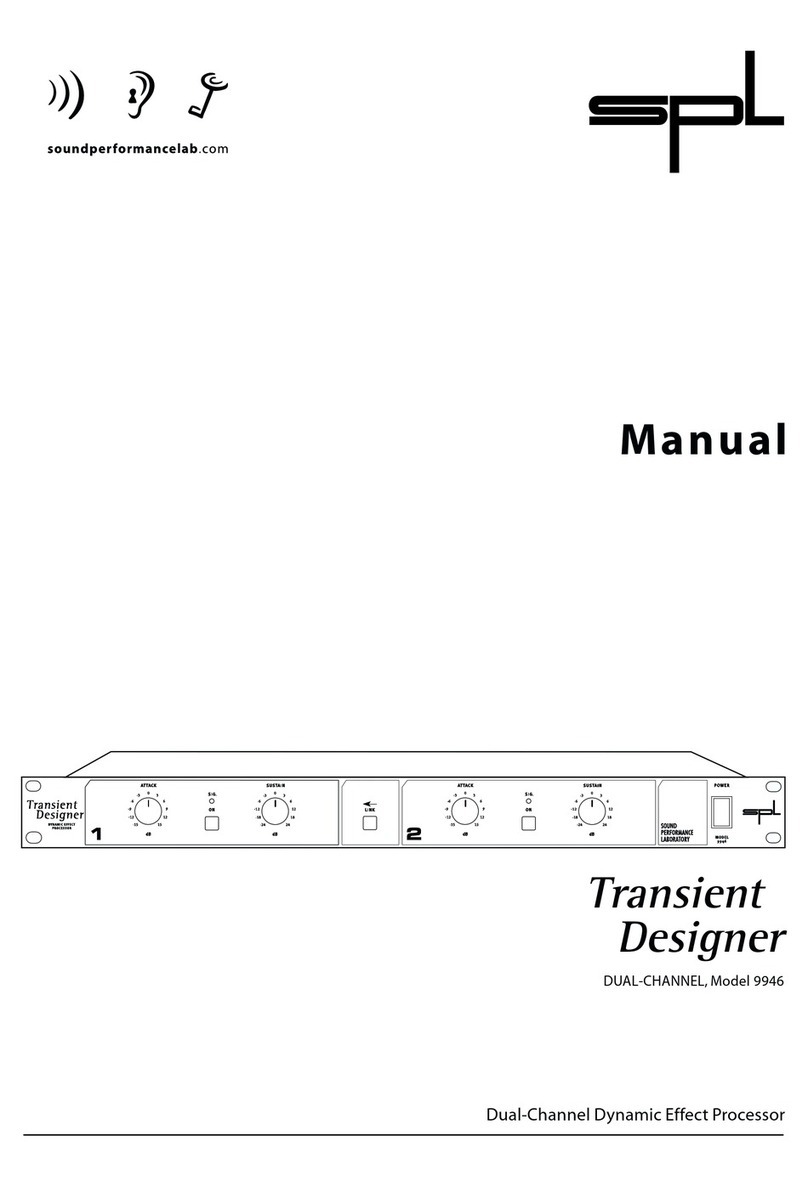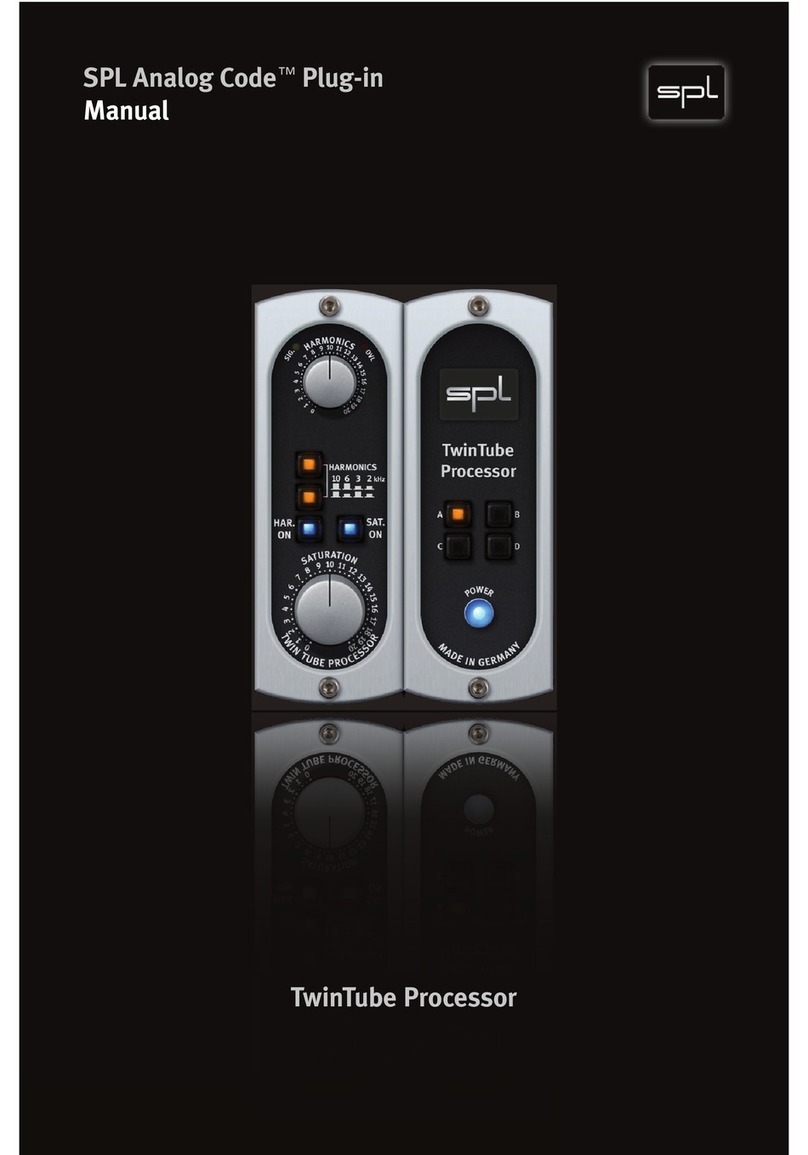
6
Installation
Voltage Selection
Before connecting the Gemini Mastering M/S Processor to the mains, make sure that the
voltage selection corresponds to the values of your local power grid (230 or 115 volts).
Inside the power connector, to the right, next to the on/off switch, there is an opening
that displays the voltage selected. If the voltage indicated does not correspond to the one
required, change it by following this procedure:
Open the power connector lid with a small screwdriver (use the tiny slots on the right hand
side). Use the screwdriver to lever the red fuse holder from above until you can grab it.
Take the fuse holder out and replace the fuse with one corresponding to the local power
grid specifications. You can find the adequate values on the rear of the unit or on page 16
of this user‘s manual. Turn the fuse holder around 180 degrees and place it back again.
When you close the lid again, you should see the correct voltage displayed in the opening.
On the product site on our website (https://gemini.spl.audio) you will find a video con-
cerning the topic “Changing the mains voltage”. If you ever have to exchange a fuse, we
recommend the video “Exchange defective fuses”.
First Steps
Before turning on the Gemini Mastering M/S Processor you must first connect the included
3-pin power cord to the 3-pin IEC socket. The transformer, power cord and IEC socket all
comply to the VDE, UL and CSA regulations.
The Gemini Mastering M/S Processor should not be installed in close proximity to equip-
ment that emits magnetic fields or emanates heat. Avoid exposure to heat, moisture,
dust, and vibrations. Do not install the Gemini Mastering M/S Processor close to any
power amps or digital processors. Instead, install it in a fully “analog rack” where any
interferences can be avoided (Word Clock, SMPTE, MIDI etc.).
The unit should be powered off before connecting or disconnecting any cables or equip-
ment to it.
Use the On/Off switch on the rear panel to turn the unit on or off. The illuminated red LED
in the middle of the front panel indicates the unit‘s operating status. The On/Off switch
was placed on the rear panel to avoid any emissions due to voltage-carrying conductors
running across the unit and affecting sound. When powering on or off, there‘s no need
to observe a specific sequence regarding the connected devices. However, like with any
audio signal chain, power amplifiers should always be powered on last and powered off
first. The Gemini Mastering M/S Processor can be powered on and off with the use of a
circuit breaker, as long as the total load does not exceed the rating of the latter.












